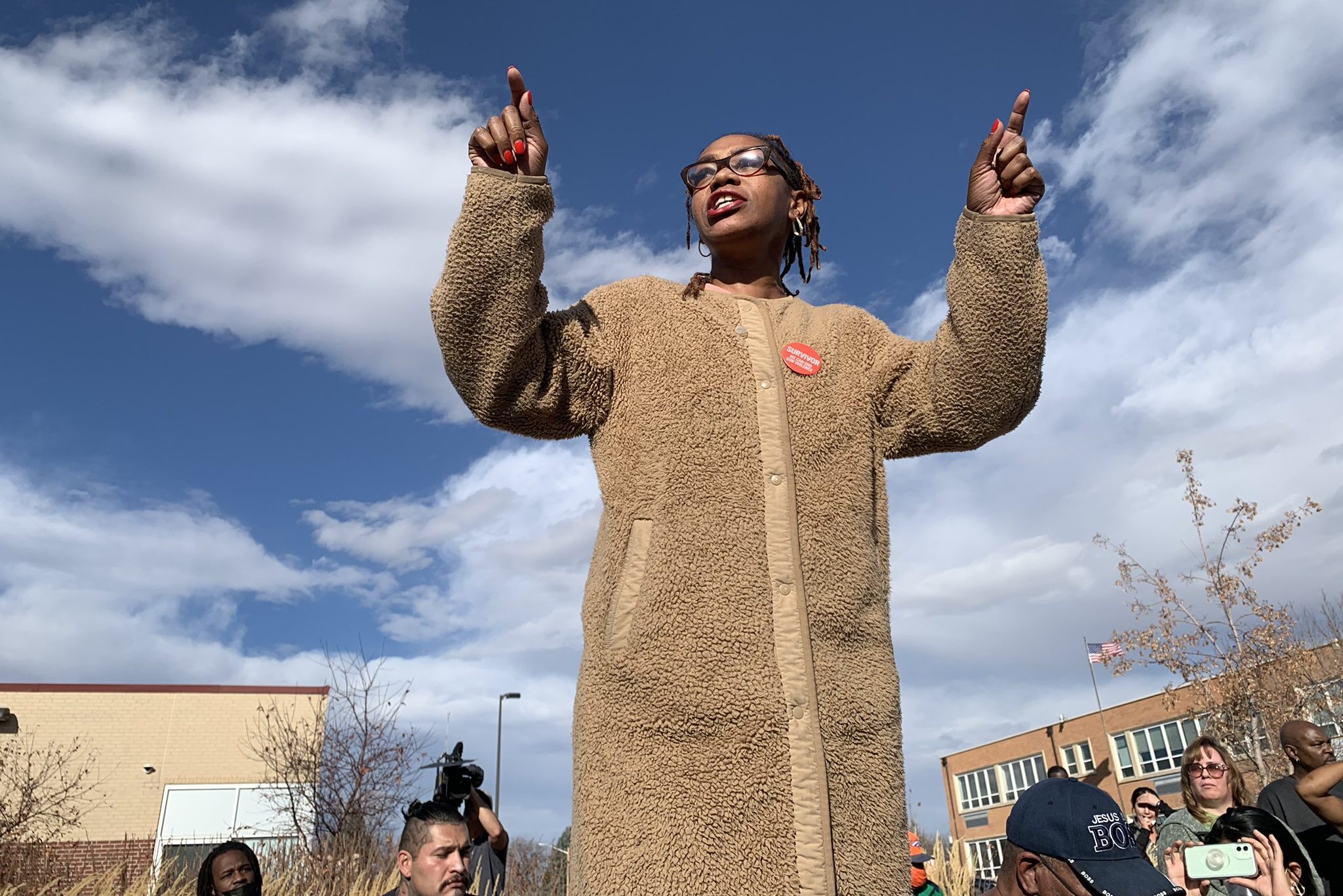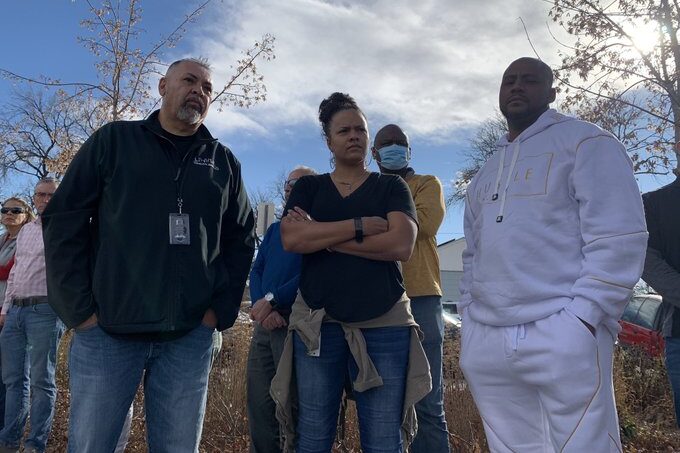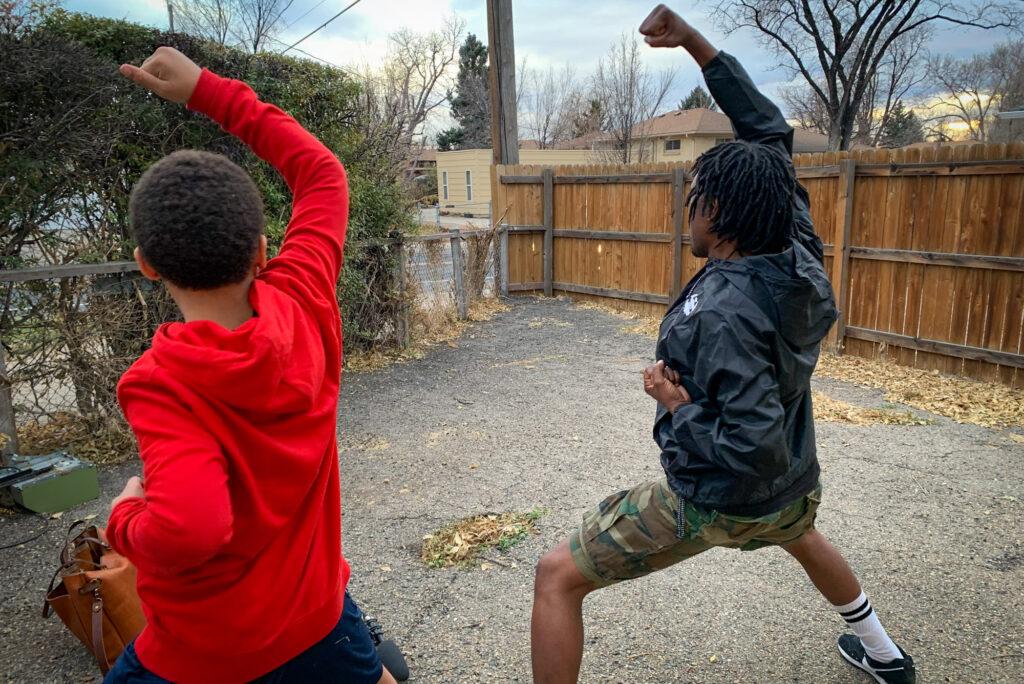
After 16 young people were shot in a mere 20 days last month in Aurora, community leaders, kids, school officials and police officers see the violence as a symptom of one critical problem: the kids, particularly the boys, need more support.
Blame it on the pandemic, blame it on social media, blame it on bullying, but it’s clear that the rash in violence — particularly among juveniles, who are both perpetrators and victims — is connected to a larger crisis of isolation, trauma and ongoing needs that were likely exacerbated by 18 months away from critical supports, including school.
So say community leaders, school leaders and those working in the trenches with the highest risk youth in the city.
“I characterize it as someone who has been in solitary confinement. You just start getting drilled on every day and then, tick, tick, boom,” said Jason McBride, a violence interrupter for the Struggle of Love Foundation. “Why is this happening? We haven’t met them, the kids, on their level in a long time: socially, educationally, financially, traditionally. We’re seeing the results of that.”
The current spate of violence began on Nov. 14, when two teenagers were playing around with an assault rifle and one was shot and killed.
Then, the next day, six teenagers were shot at Nome Park, across from Aurora Central High School.
Four days later, right as a rally was about to start to call for community calm, three more teenagers were wounded in a shooting in the parking lot at Hinkley High that police confirmed was gang-related. On Thanksgiving, a teen died in a road rage fight with an adult.
Most recently, five young people — four teens and one 20-year-old — were shot at a party off of East Colfax Avenue and Dayton Street on Nov. 28.
None of the victims died in any of the mass shootings. Two teens have been arrested for the Nome Park attack, and three other youths are being charged as adults for the shooting at Hinkley High. So far police haven’t connected any of those incidents with each other.
“If they were to be connected, it’s an easier explanation,” said Aurora Police Deputy Chief Darin Parker. “One group got mad at another group, the first incident happens, there’s a retaliation, that kind of thing. It provides an explanation. I don’t believe we have that at this point. It is concerning. And it’s frustrating. Because we don’t have all the answers. And we don’t know why young people … are making these decisions to settle their disputes with gunfire.”
Aurora has seen more gun violence in 2021 than even in 2020 — when violent crime spiked in the metro area and across the state.
So far this year, there have been 135 non-fatal shootings in Aurora, up from 99 in all of 2020.
As for deadly shootings, the two years are close to on par: There have been 29 people killed by guns so far in 2021, compared to 33 in all of 2020, according to the Aurora Police Department.
Asked about whether teen access to guns is a factor, Deputy Chief Parker was skeptical.
“Without getting into politics, guns by themselves aren’t a problem,” he said. “I think it’s the willingness for people to use these guns. That seems to be increasing … There has always been gun violence but it feels like people are just more willing to settle their disputes with gunfire than they have in the past.”

‘We want to offer them options’
Advocates and community leaders say street violence, including assaults and stabbings, has been ongoing, particularly in Aurora and Denver, for a long time, and many say they resent that it’s only this current violent spike that has finally attracted wider attention. They also acknowledge that the number of kids injured by gunfire in November was eye-popping.
“It’s getting to the point that it’s hard for me to go to work because every time I go to work, it’s just violence,” said Lawrence Goshon, who works as a mentor at GRASP or Gang Rescue And Support Project. “Before the pandemic, we at least had the opportunity to have some victories … We were able to connect with the kids.”
Goshon receives text messages on his phone every time a victim of violence gets admitted into the emergency room at UC Health. He or one of the other GRASP mentors will often go to the bedside to try and prevent additional violence.
He said the mentors all have different approaches, but, for him, he doesn’t try to dissuade them from family or friends or, even, to give up any gang connections. He “meets them in their moment” and tries to prevent them from ever experiencing violence again.
“We want to make them realize, if it’s something they could control, well, if you change this, maybe this won’t happen again,” Goshon said. “We want to offer them options and provide strategies on how to not be engaged in further violence.”
In talking to kids in these recent weeks, Goshon said he senses they are trying to find connections through the people they admire on social media -- even if those connections lead them to violence.
Goshon, who served time in prison and once identified as a Crip, doesn’t blame gang affiliation itself.
“A lot of these kids aren’t as violent as they seem. But it’s trendy to shoot somebody. It’s like, ‘hey I’m a gangster, I carry a gun, if you disrespect me, this is going to be the outcome,’” he said, adding, “You can see it [o]n TV, music, social media. It’s expected for the kids growing up in these environments. The example around them is that they should do this.”
Pandemic and social media pile on the stress
Omar Montgomery, president of the Aurora branch of the NAACP, said adults also need to take some responsibility for the stressful environment kids are growing up in. He points to the Jan. 6, 2021 storming of the U.S. Capitol and the viral videos of people throwing temper tantrums on airplanes as examples of things potentially influencing children.
Montgomery — who works full time within the Cherry Creek School District — also points out that when students get bullied at school, they may not have the coping skills to figure out how to handle it non-violently.
“We have to teach our kids how to value each other, how to value life, teach them that acts of kindness far more supersede the acts of violence,” he said. “But they have to see adults channel that behavior too.”
Montgomery also had some plain advice for parents: Be nosy. Don’t be afraid to look in backpacks and monitor kids’ social media accounts.
This sentiment was echoed recently by Andre Coleman, a Denver teenager who attended a town hall for gun violence at the Dayton Street Opportunity Center.
“You know, ask questions,” he told the room. “Even if they don’t want you to, ask questions. If you’ve got to, search that phone.”
Aurora Public Schools Superintendent Rico Munn, who has been working in education for more than two decades, said this year has felt sharply different than years past, as many students come back to full-time in-person learning for the first time since the start of the pandemic.
“We are seeing an increase in dysregulation in our kids, where their ability to self-regulate their feelings and behaviors has been disrupted by the pandemic,” Munn said. “Perhaps it was the time spent isolated and not in those practices. We have ninth-graders who the last time they were in a full year of school was sixth or seventh grade, so a lot of the rituals and routines were disrupted.”
Munn is trying to solve the overarching problems he’s seeing in big and small ways. In response to the recent violence, he added security measures and temporarily closed all high school campuses for lunch.
But he’s also trying to work with as many people in the community as he can to touch the kids who need help. It’s a challenge though. APS, like many other school districts, faces a staffing crisis. And currently, the city of Aurora can’t find people to staff all the intervention positions they have funding for.
“The first thing is always more caring adults. More caring adults connected to kids is always going to be a winning solution to a lot of things,” Munn said. “We’re also trying to get the kids back to a sense of normalcy. It is normal to be in school. It is normal to be safe in school.”

Reaching kids, one at a time
Halim Ali, who runs From The Heart Foundation, a program that mentors kids, mostly boys, as young as 8, said he’s noticed a spike in anger management problems among his kids.
“It’s definitely not the same as it was,” Ali said. “I would say 85 percent of the young men I work with in the last three months all have these anger issues. They all have them for different reasons.”
On a recent evening, Ali was hanging out with a 6th-grader from North Middle School in Ali’s mother’s backyard in Aurora.
The 11-year-old, who CPR is not identifying, was flagged for help because he was having trouble coping with bullying and anger management once he returned to school this year.
“People are talking about all of the violence,” the boy said in an interview. “I don’t know if it’s just because people were stuck at their house and not doing anything … Some people got mad, or would do bad, or if they lost a little bit of control over themselves, because they weren’t doing anything. They couldn’t see who they used to see.”
The boy said he has seen a counselor at school, but the counselor hasn’t had the same time as he used to because of rapidly-changing COVID protocols.
When Ali and the boy get together, they do martial arts and meditate and talk about how to handle bouts of disappointment, depression and anger. The boy told Ali that just that day, he’d been bullied in the library and decided to walk away and tell a teacher, rather than engage with the student.
Ali turned to face the freckled, bespectacled 11-year-old.
“What we initially work on is hope, personal responsibility, self-advocacy, support and education,” he said, meeting his eyes. “You went and told the teacher, that’s self-advocacy.”
Ali added: “He’s practicing these things. This is my guy. This is my buddy. I’m proud of you, man. I’m so proud of you.”








